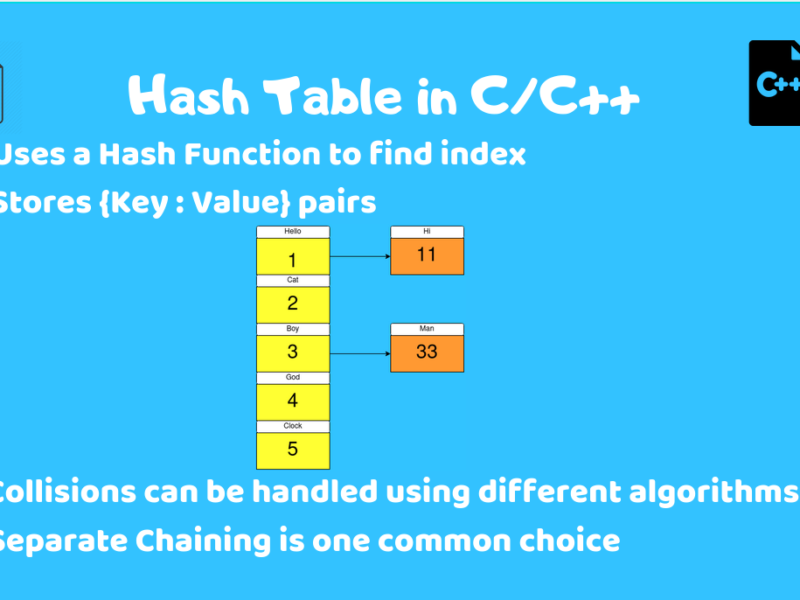
What is Hashing in Data Structure
Hashing is one of the most important designs of Data Structure, which helps to solve the problems of storing data in an array or finding data in an array. If you have a list of 10,000 numbers and you have found a specific number in that list. You will search each number one by one until the desired number is found.
This process of finding the desired element requires a large amount of time. This process of searching throughout the list is not only time consuming but also inefficient. This is where Hashing is used. Hashing in Data Structure is used to narrow down the search and find the item in less time.
In this article, we will know about the hashing methods in detail.
What is Hashing in Data Structure?
In Data Structure, hashing is a technique of converting a large list of data into small tables by using some functions, called hashing functions. We can also call these functions the message digest function. In these techniques, hash tables are used to store the data in a form of an array. Each element of an array has been assigned a unique index number. Hash table uses a unique technique to generate a unique index number for each item stored in an array format. This unique technique is called the hash technique.
Using the Hashing technique, you only need to find the index of the required data instead of finding the data. It becomes very easy to scan the entire list and retrieve the desired item by the method of indexing. With the help of indexing, you can also do the insert operations. You can insert data at specific locations by indexing. It doesn’t matter how big the table is, you can search or insert data from the list very easily by the hash function.
Hashing functions are done in two steps, that is
The hash function converts the item into a small integer (hash value). This integer or hash value is used as an index to store the original data.
It stores the data in a hash table. You can use a hash key to locate data quickly.
Look at some real-life examples of hashing:
In school, every student is assigned a roll number that is unique. These roll numbers are used by the teachers to retrieve any information about that student.
In a library, there are large numbers of books. Each book is assigned a unique number or code by the librarian to identify the position of the book in the library.
The hash function in a data structure sorted the arbitrary size of data to fixed-sized data. It returns the following values: a small integer value or hash value, hash codes, and hash sums.
hash = hashfunc(key)
index = hash % array_size
The hash function should satisfy the following requirements:
A good hash function is easy to compute.
A good hash function never gets stuck in clustering and distributes keys evenly across the hash table.
A good hash function avoids collision when two elements or items get assigned to the same hash value.
To know more about hash functions and hashing problems and solutions, visit help me study bro. It is one of the best platforms to understand the hashing problems and solutions in a very efficient way.





No Comment